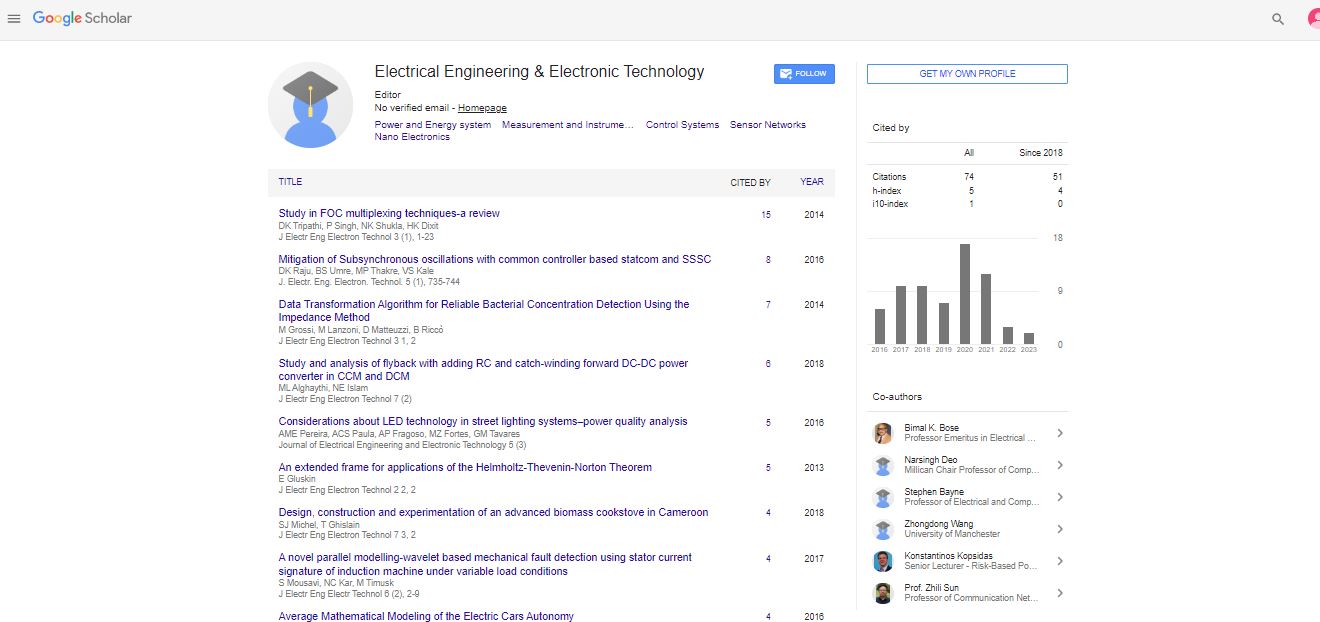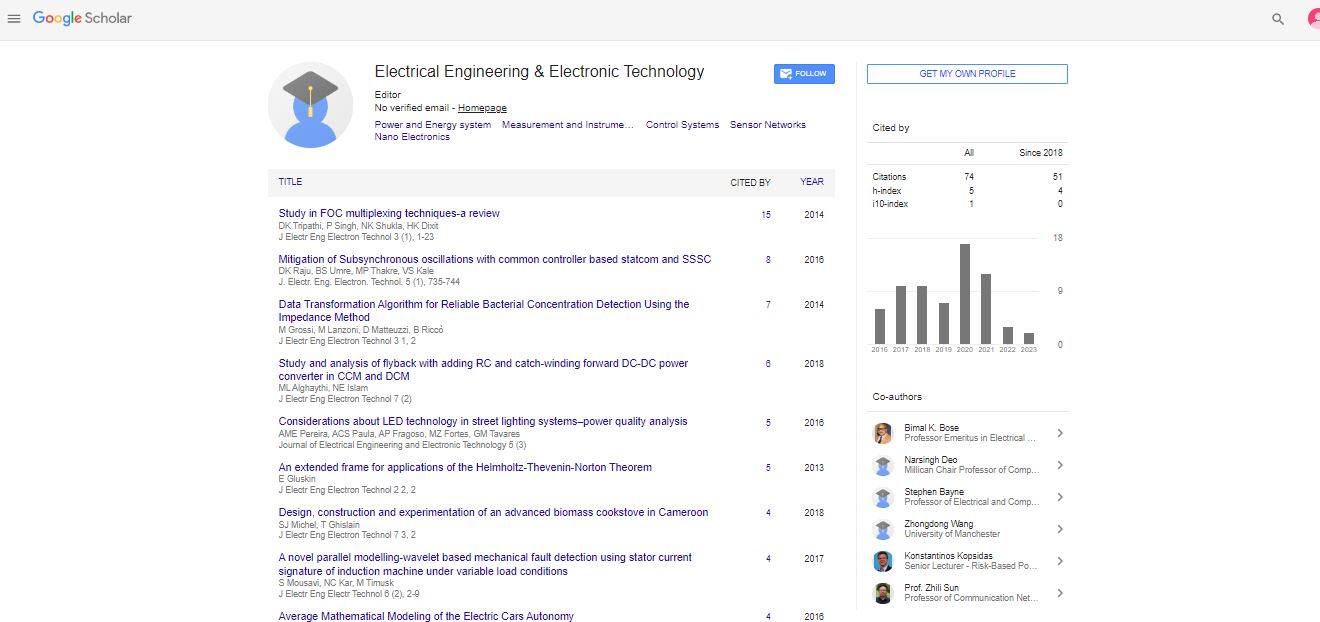Short Communication, J Electr Eng Electron Technol Vol: 10 Issue: 9
A Capacitive Touchscreen Biosensor for Label-Free Detection of Electrolyte Concentrations
Sebastian Horstmann
PhD Student, University of Cambridge, UK
Abstract
We are investigating the use of mutual projected capacitive touchscreens as a label-free sensing technique. It is projected that by 2021 the number of users of capacitive touchscreen-based mobile devices will have grown to 3.8 billion people worldwide, a 52% increase within just five years. Smartphone penetration is especially expanding amongst developing countries and has attracted attention for collecting a sensor’s readout or interpreting sensed data in low- cost healthcare applications. In the medical technology sector, in-vitro diagnostics is the leading growth area and anticipated applications include biosensors will allow monitoring of drinking water quality or measurement of physiological parameters such as blood glucose levels. Here we report on the benefits and challenges of using the capacitive touchscreen for bio sensing studies, a component of the mobile device often neglected in the literature. Capacitive fringe fields project above the touchscreen’s glass surface to sense and interact with a stylus or finger. Instead, we examine interactions with fluid samples and specifically sensing the presence of electrolytes. This is carried out by studying the polarization properties of electrolyte samples in response to different electrical perturbation frequencies up to the megahertz regime. Initial results show a linear response for static capacitance measurements of low ionic concentrations below 200 μM of sodium, magnesium, calcium or potassium chloride. This has potential to directly transfer to human sweat sensing for monitoring of chronic kidney dysfunction and opens the door to exploring more complex bio sensing with capacitive touchscreen displays.
Introduction
We are investigating the use of mutual projected capacitive touchscreens as a label-free sensing technique. It is projected that by 2021 the number of users of capacitive touchscreen-based mobile devices will have grown to 3.8 billion people worldwide, a 52% increase within just five years. Smartphone penetration is especially expanding amongst developing countries and has attracted attention for collecting a sensor’s readout or interpreting sensed data in lowcost healthcare applications. In the medical technology sector, in-vitro diagnostics is the leading growth area and anticipated applications include biosensors will allow monitoring of drinking water quality or measurement of physiological parameters such as blood glucose levels. Here we report on the benefits and challenges of using the capacitive touchscreen for bio sensing studies, a component of the mobile device often neglected in the literature. Capacitive fringe fields project above the touchscreen’s glass surface to sense and interact with a stylus or finger.
 Spanish
Spanish  Chinese
Chinese  Russian
Russian  German
German  French
French  Japanese
Japanese  Portuguese
Portuguese  Hindi
Hindi 
